Overview
The Mangyongdae Schoolchildren’s Palace is a comprehensive institution for extracurricular education in Pyongyang. Schoolchildren attend after school classes here to reach their talent potential in fields such as performance arts, science and technology, foreign languages, and sports.
President Kim Il Sung referred to children as the ‘kings of the country’, understanding the importance of their education to the future of the nation. Schoolchildren palaces have subsequently been built in most North Korean cities, with the Mangyongdae Schoolchildren’s Palace in Pyongyang as the largest and benchmark facility.
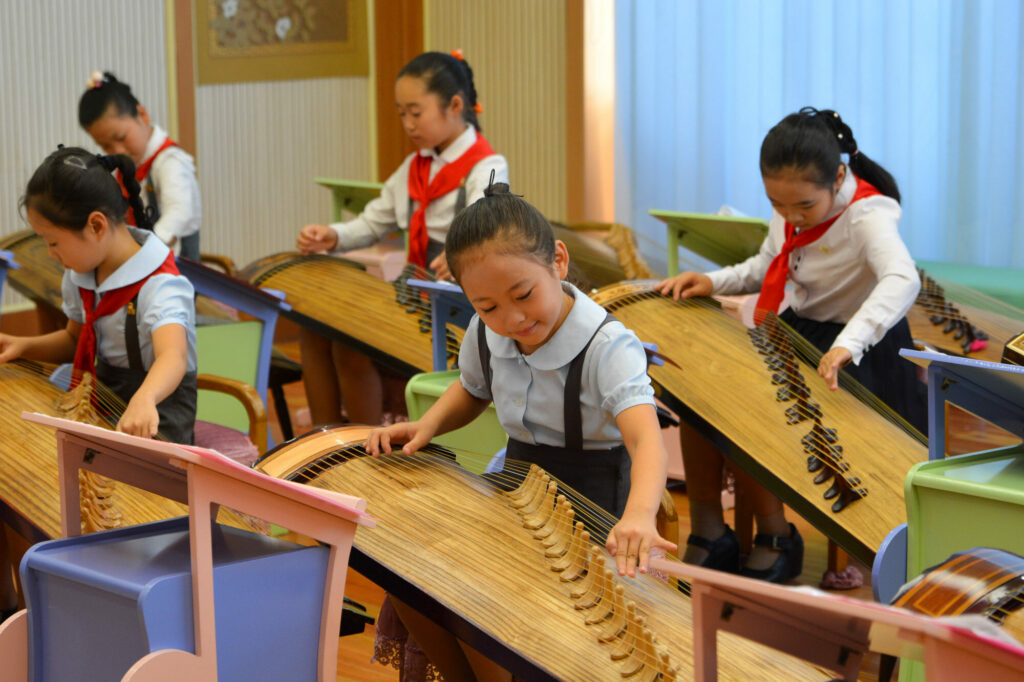
The Mangyongdae Schoolchildren’s Palace was inaugurated on May 2, 1989, as part of the construction of the modern Kwangbok Street. It underwent major renovations at Kim Jong Un’s direction after his visit in May 2014. The opening ceremony was held on December 8, 2015.
All students are under the age of 16, and up to 5000 students visit Mangyongdae Schoolchildren’s Palace daily. Universal education is free in North Korea and promising students are able to attend the Mangyongdae Schoolchildren’s Palace without charge.
The Mangyongdae Schoolchildren’s Palace is located at the western end of Kwangbok Street in Mangyongdae District, Pyongyang.
Design and Symbolism
The design of the Mangyongdae Schoolchildren’s Palace is among Pyongyang’s most impressive. The grandiose, curved architecture is said to represent the motherly embrace of the Workers’ Party of Korea, who spare no expense for the younger generations. The building is constructed of natural granite.
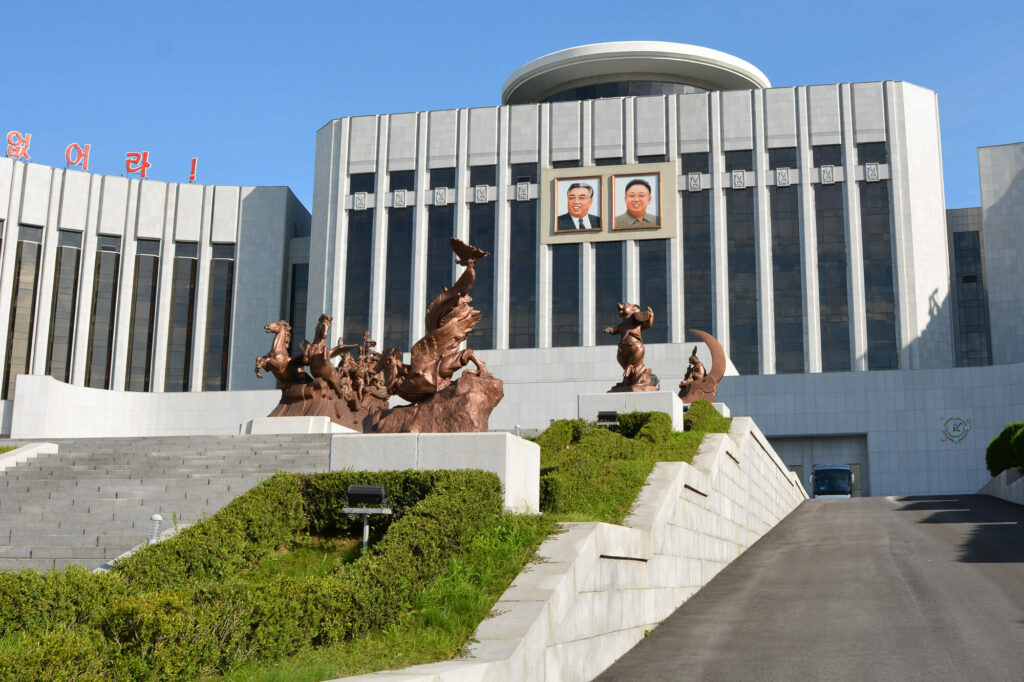
The stairs leading to the entrance are lined by bronze sculptures of North Korean cartoon characters, with a large group sculpture of children riding a chariot of two winged horses in the centre. Two massive murals depicting the happiness of the children are on each side of the building.
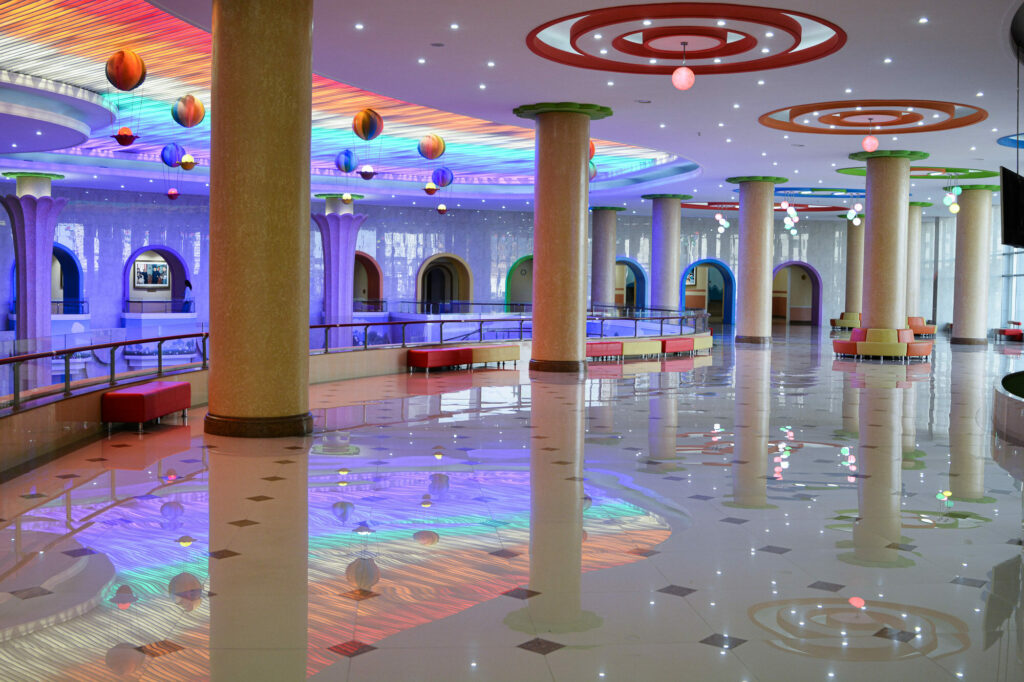
The inside of the Mangyongdae Schoolchildren’s Palace is best characterised as colourful and vibrant, with pastel tones appealing to children. The entrance hall features golden handwriting from President Kim Il Sung. Photos of visits from President Kim Il Sung, Chairman Kim Jong Il and Marshal Kim Jong Un are hung on the walls. Halls are marble, floors are shined and ceilings are held up by pillars, producing a palatial atmosphere fit for a king, in line with the Party’s wishes for the children.
The entire grounds of the Mangyongdae Schoolchildren’s Palace span 214,000㎡ and is made up of the following:
- Main Building (floor space 105,000㎡, 8 stories, consists of 150 classrooms and training halls)
- Art Building (4 stories, includes rooms for performing arts groups)
- Dormitory (4 stories, self-contained with dining halls, study rooms, entertainment centre, doctors clinic)
- Health Complex
- Driver Practice Area (computer-simulated driving is also available)
- Sports Ground
- Study Area
- Memorial Tree Planting Area (Chairman Kim Jong Il planted a tree here during April, 1990)
- Park
What Classes and Activities Are Available?
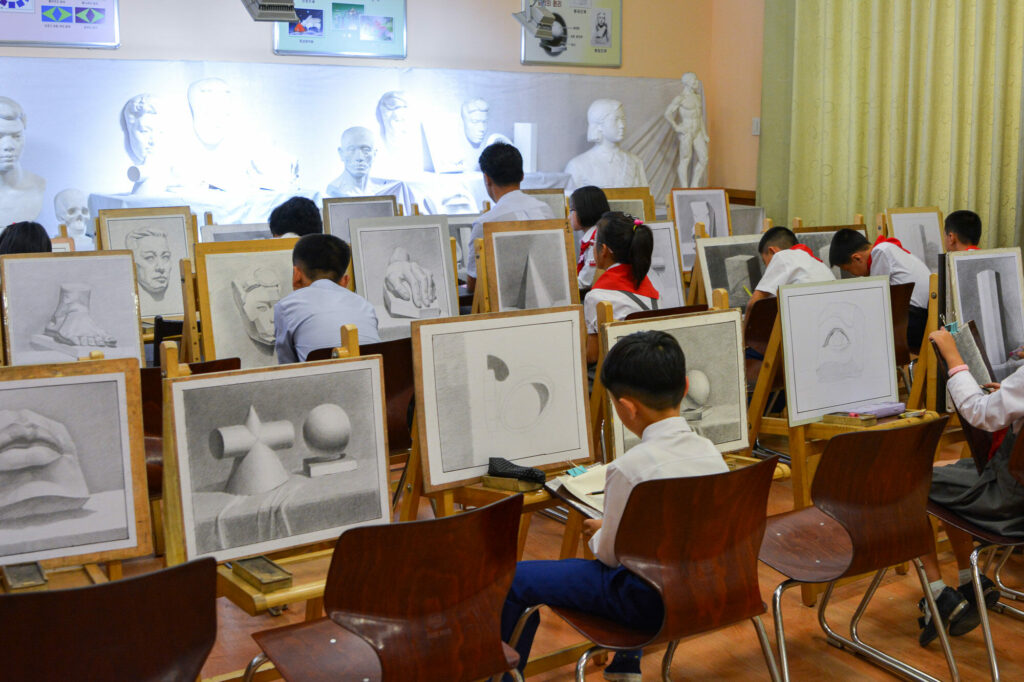
Mangyongdae Schoolchildren’s Palace provides tutoring on a wide variety of broad and specific topics, such as the following:
Science: Physics, Chemistry, Maths, Astronomy, Computer Science, Electrics, Photography, Model Gliders
Art: Dance, Singing, Musical Instrument (kayagum, accordion, etc.), Fine Art, Embroidery, Calligraphy, Gymnastics Dance. In the art building, there are specialised ensemble rooms and performance space
Foreign Languages: English, Chinese, and Russian are the most popular.
Sports: Judo, Taekwondo, Table Tennis, Volleyball, Basketball, Swimming, Weightlifting, Rhythmic Gymnastics, Paduk (traditional Korean board game)
Public Activities: Theatre, Gymnasium, Swimming Pool, Library, E-library, Gaming Hall, 4D Cinema, Sci-Tech Hall, Telescope Room, Computer Driving Room, Taxidermy Exhibition, Art Exhibition
Weekly Performance
The Mangyongdae Schoolchildren’s Palace has a 2000-seat auditorium and every Thursday afternoon a performance is held by the students to bring their skills into practice with a live audience. The performance goes for roughly an hour.
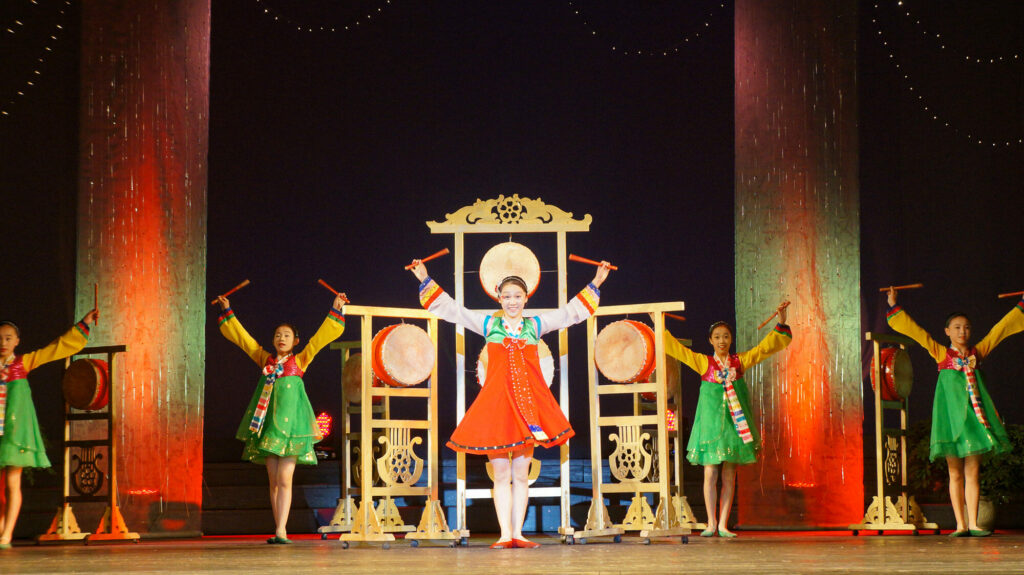
The performance is entertaining and extremely polished, with a lineup of varied acts of singing, traditional dance, circus acts, and music ensembles. Lots of effort go into the elaborate costumes and choreography, with many acts telling the story of North Korea’s history or prosperous future.
Since 1990, a special New Year’s performance has been put on by the children in this theatre.
Interesting Facts
- The Mangyongdae Schoolchildren’s Palace has produced North Korean celebrities such as Kim Jong Mi of Moranbong Band and 2016 Men’s Vault Olympic Gold medalist Ri Se Kwang
- There’s a second palace in Pyongyang named the Pyongyang Students and Children’s Palace which was inaugurated in 1963
- Many study groups have been awarded medals and certificates in art festivals, competitions and exhibitions held in both North Korea and internationally, which are displayed in their homerooms
- In the Science Hall, there is a massive model of the Unha-3 rocket, used to successfully launch a satellite in 2012
- There’s a room inside the palace for revolutionary education, which is to teach staff and children the feats of the leadership in making the Mangyongdae Schoolchildren’s Palace a reality
- President Kim Il Sung attended every year the New Year performance by the children in the auditorium
- Many computers in the Mangyongdae Schoolchildren’s Palace use the ‘Red Star’ operating system, a North Korean distribution of Linux that resembles MacOS
- The renovation of the Mangyongdae Schoolchildren’s Palace was part of a drive to improve youth facilities across the country, including the Pyongyang Orphanage and the Natural History Museum
Visiting on Our Tours
We tour the Mangyongdae Schoolchildren’s Palace on most of our group tours visiting Pyongyang. We can also arrange it on private tours. A visit to the Mangyongdae Schoolchildren’s Palace is a window into socialist education, a strictly disciplined style unfamiliar to most foreigners.
On visits, we’ll be guided by a young student of the palace itself who is learning vocal and presentation skills, who will explain the history, lead us through the key halls and drop in on a few running classes.
It’s possible to visit on Tuesday or Thursday afternoons, but the performance is only held on Thursdays, and we always do our best to align this with our tour itineraries for the full experience! Photography is permitted inside the building and at the performance, but no flash.
Nearby attractions in Mangyongdae District in Pyongyang include the Mangyongdae Native House, Pyongyang Circus, Kwangbok Department Store, National Gift Hall, and Mt. Ryongak (hiking and picnics possible). If you wish to stay nearby, the Chongnyon Hotel is not far!
